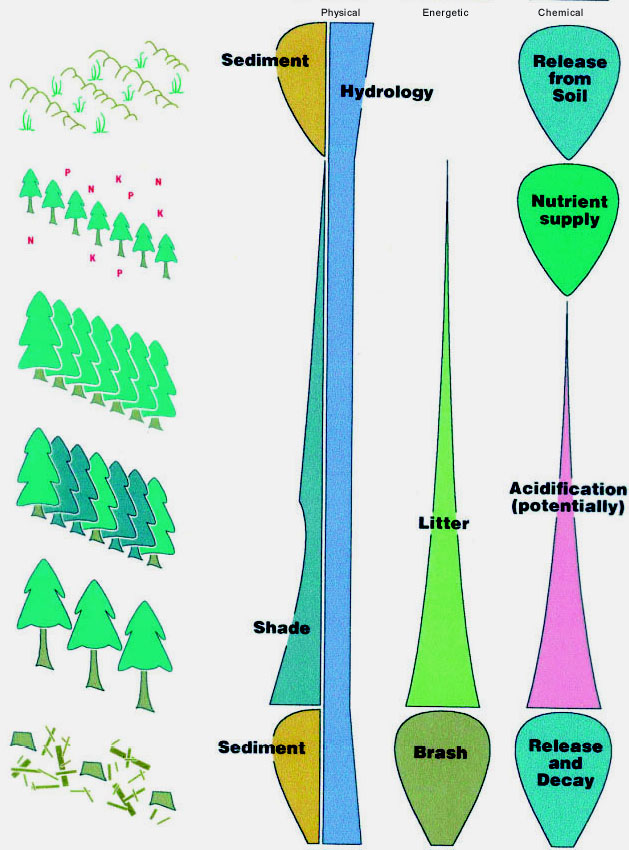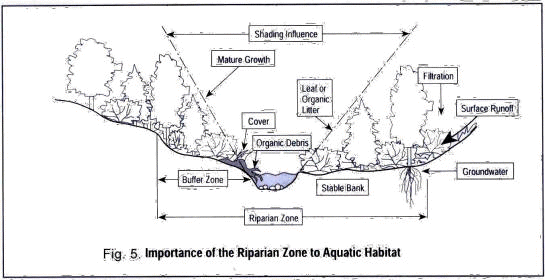Guidelines to reduce the impacts of forest clearing
Riparian areas and the running water environments can be affected by clearfelling operations through changes such as loss of banks side vegetation, dramatic changes in the hydrological regime caused due to excessive runoff, changes in incident sunlight, increase in soil inputs/suspended solids, physical stream disturbance by machinery, release of nutrients, and inputs of excessive quantities of large woody debris. The changes in the stream environment can in turn cause in the quality of water and the biology of the stream (refer Fig. 4) incorporated from the guidelines available on forestry. The landing area may become an impermeable surface and may lead to decreased percolation of water through the soil. The skidding or hauling of felled or cut tress has the potential to destroy the vegetation, compact soil and make large ruts in soil crating conditions for erosion and sedimentation.
Acidification is one of the most widely researched interactions of forestry and river systems. One of the main components of increased acidity is the leaching out of metallic elements which may have toxic effects. Clear cutting can also cause changes in dissolved oxygen content as a result of high demand for oxygen by decaying organic matter (Fig. 5).

Fig. 4. Schematic diagram to illustrate the nature of changes that can take place to various aspects of the ecology and habitat of freshwater systems in relation to the forest cycle (Source: Giller et al., 2002)

Source: Anon (undated)
The following are the recommendations to overcome some of the impacts identified above:
i. Landings should not be permitted within 15 meters of the watercourses.
ii. Landings and loading areas within 30 meters of a watercourse should be located close to the roadway on higher ground to avoid rutting and blockage of drainage paths.
iii. Vegetated riparian buffer zones should be maintained to prevent or reduce the inputs of nutrients and create a barrier for surface movement of sediments
iv. Drainage channels from the felled area should never be in direct contact with a stream, since they can be a source of nutrient inputs into the stream.
v. Inputs of relatively large amounts of fine organic debris, bark, and twigs should be kept to a minimum as the changes in pH may be associated with these substances.
vi. Care should be taken to prevent bank collapses and slippages. Any risk of bank collapses should be identified and eliminated prior to commencement of clear felling operation.
vii. Roads and tracks for machinery should be kept away from streams to avoid them becoming routes of sediment input. Where tracks are to be created on slopes, small off lets should be dug at intervals to prevent water running directly down the slope.
viii. Clear felling during the period of rains will exacerbate the potential for soil erosion and sediment runoff.
ix. Felling and extraction should be carefully synchronized to minimize number of stream crossings. This should however not lead to consequent increase in lengths of off routes and the disproportionate increase in number of machines.
Last Updated: January 21, 2014









